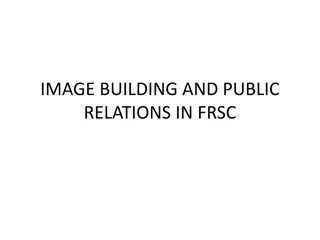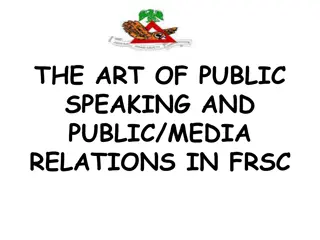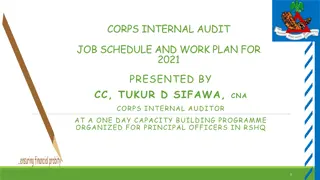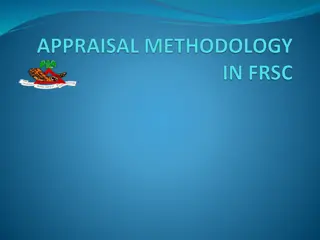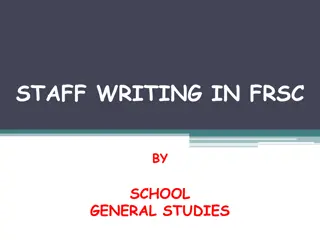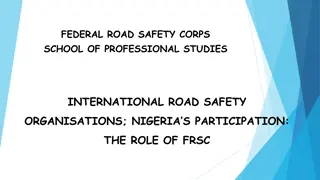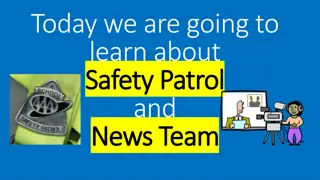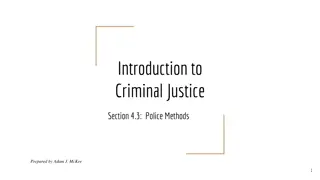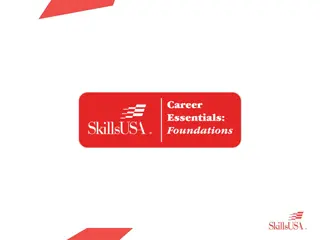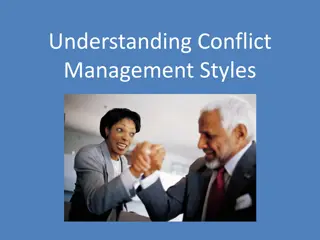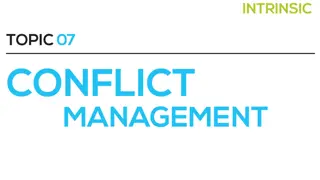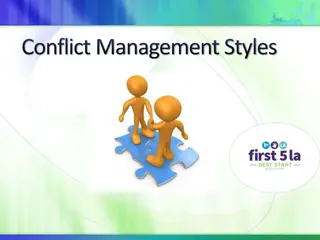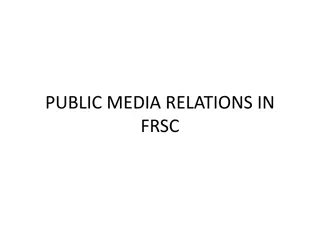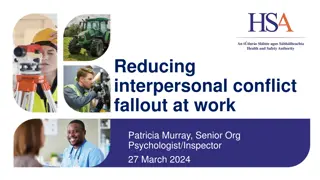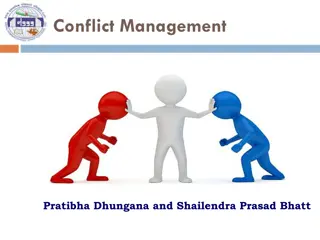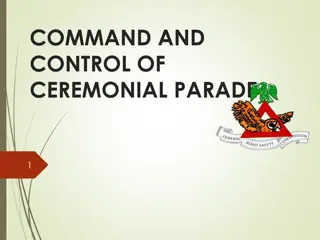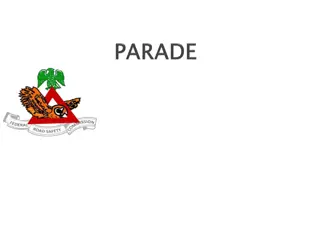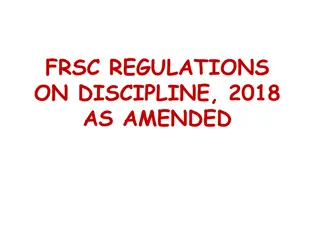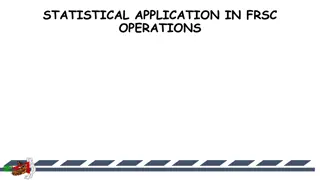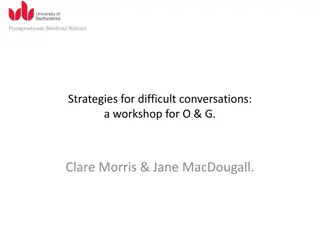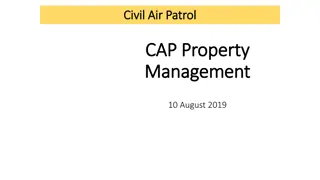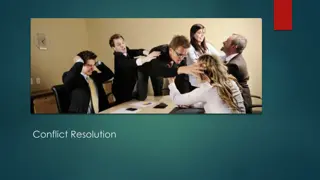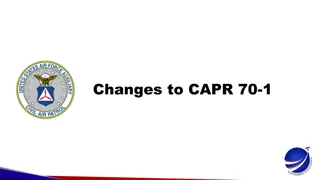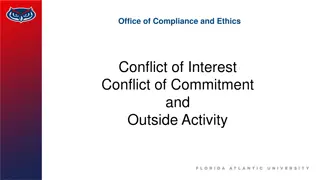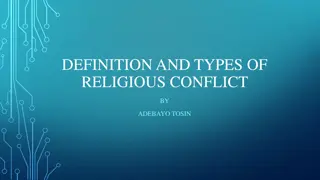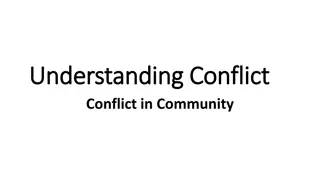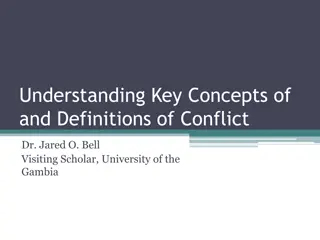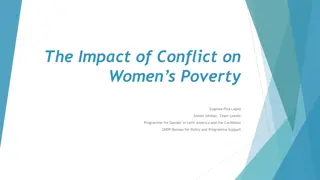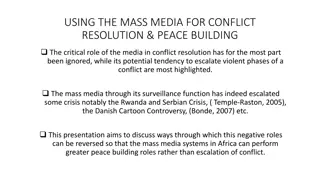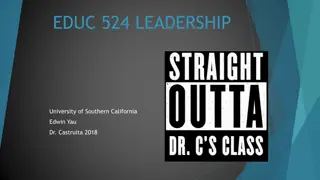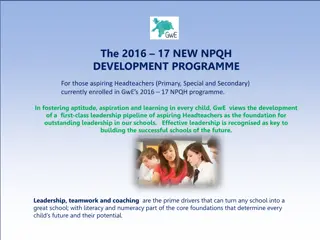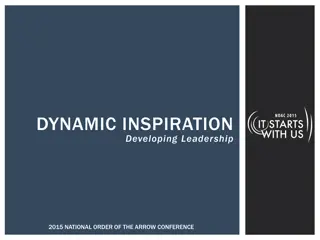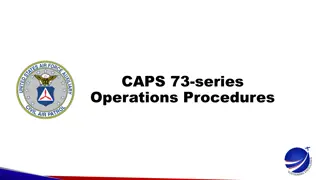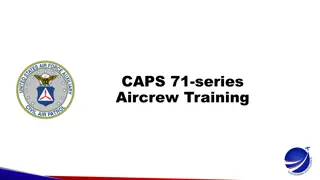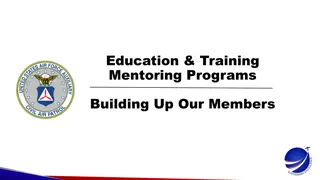Patrol Leadership and Conflict Management in FRSC
Explore the essential aspects of patrol leadership and conflict management within the Federal Road Safety Corps (FRSC). This comprehensive lecture covers the responsibilities, objectives, and challenges faced by patrol team leaders in ensuring effective traffic enforcement and highway safety. Learn about managing intra-team conflicts, handling driver/patrol team conflicts, and navigating external challenges in patrol operations.
Download Presentation

Please find below an Image/Link to download the presentation.
The content on the website is provided AS IS for your information and personal use only. It may not be sold, licensed, or shared on other websites without obtaining consent from the author. Download presentation by click this link. If you encounter any issues during the download, it is possible that the publisher has removed the file from their server.
E N D
Presentation Transcript
PATROL LEADERSHIP AND CONFLICT MANAGEMENT
INTRODUCTION TO CONFLICT MANAGEMENT INTRODUCTION The success and longevity of FRSC traffic enforcement networks are the result of outstanding leadership, so patrol team leaders must have a passion for traffic enforcement and highway safety. Team leaders come from the ranks of junior officers of the Corps; these individuals possess the skills, knowledge, attitude and leadership qualities to coordinate traffic enforcement operations effectively. Traffic patrol officers are from the ranks of ARC to RC, however senior officers may lead sensitive and special operations as the rule of the moment demands. Any interface between humans and all activities that are masses oriented are prone to conflicts. FRSC patrol operations are highly masses oriented and generate occasional conflicts, which must be managed by the patrol team leaders.
AIMS: The aim of this lecture is to examine and analyze patrol leadership management. and conflict
OBJECTIVES At the end of this lecture participants should be able to: i. Discuss the concept of patrol leadership and conflict management. ii. Explain the types of patrol. iii. Discuss the preparations necessary for patrol. iv. Examine the operational disposition of a team leader. v. Management of intra-team conflict. vi. Analyze Driver/ Patrol team conflict. Vii. Discuss Team external conflict. viii. Elucidate the challenges of patrol operations.
PATROL LEADERSHIP: patrol leadership in the FRSC parlance is the responsibility of team leaders; they fall within the officer rank cadre of ARC to RC. When an officer assumes the position of patrol team leader, he agrees to provide service and leadership to the patrol team, he becomes a plenipotentiary of the COMACE and by extension the FRSC. No doubt he will take this responsibility seriously.
RESPONSIBILITIES OF A TEAM LEADER As a patrol team leader you are expected to do the following a. Plan and lead patrol meeting and activities b. Keep patrol team members informed and carry them along. c. Assign each member a specific duty and task. d. Represent your team and account for any action or inaction of the team. e. Prepare and work with every member of the team. f. Know the traits for individualism of every team member. g. Lead by example
RESPONSIBILITIES OF A TEAM LEADER CONT. h. Ensure proper turn out of every member. I. Live by the operational procedures and FRSC ethics. j. Ensure that the patrol vehicle is in order and that other operational inputs are adequate. k. Show and develop adequate patrol spirit. l. Keep possession of and handles the issuing of tickets. m. Fills the field report form and writes the patrol report. n. Takes full charge, command and control of the entire patrol operations.
TYPES OF PATROL The FRSC in her operational strategy adopts basically eight (8) types of patrol operations as follows: i. Mobile Speed control patrol ii. Static speed control patrol iii. Surveillance patrol iv. Rescue mission v. Night patrol vi. Special patrol vii. Foot team patrol viii. Metropolitan bike patrol
PREPARATION FOR A PATROL OPERATION: The preparation for patrol commences immediately the part-one order is displayed and you find out your deployment, a committed staff immediately carries out mind preparation, thought is given to appearance, turn up time as specified, nutritional considerations and finally positive delivery. The following pertinent elements must be considered I preparing for patrol. i. Time: ii. Turn out iii. The patrol vehicle iv. Operational documents and other implements v. Cash declaration vi. Vehicle inspection vii.Searching of team members viii.Combing of the patrol environment
WHAT IS CONFLICT A serious disagreement and argument about something important. If two or groups are in conflict, they have had a serious disagreement or argument and have not yet reached agreement. A conflict is also clash of interest.
CONFLICT MANAGMENT This is the process of limiting the negative aspect of conflict while increasing the positive aspects of conflict (https://en.wiipedia.org) There management behaviour that have been researched in the past century. One of the earliest, Mary Parker Follett(1926/1940) found that conflict was managed by individuals in three compromise, and integration. She also found other ways of handling conflict that were employed by organizations, such as avoidance and suppression have been many styles of conflict main ways: domination,
CONFLICT MANAGEMENT CONT. Domination: the exercise of power or influence over someone or something, or the state of being so control. It is total control. Compromise: an agreement or settlement of a dispute that is reached by each side making concessions Integrate: to form, coordinate, or blend into functioning or unified whole.
CONFLICT MANAGEMENT/RESOLUTION IN FRSC OPERATIONS As hinted above, conflict is bound to happen in an environment where there are human interractions. FRSC is one social entity having organised activities involving a lot of people interpreted and appreciated differently by the public. The complexities and characteristics of the motoring public necessarily creates conflicts of various degrees. If properly managed, conflict could actually be a source of positive change. This fact underscores the reason the understanding of types of conflicts in FRSC operations is germaine to its management. and its operations
TYPES OF CONFICTS IN FRSC OPERATIONS In organisational conflict and indeed in FRSC, two basic classifications are easily identified. They are: Intra-organisational and Inter-organisational conflicts. Some prefer to refer to them as Internal and External conflicts. Intra-organisational conflict is conflict within an organization, and can be further classified based on scope (e.g. department, work team, individual). Inter-organisational conflict occurs between two or more organizations, for example, when different businesses compete against one another. For the purpose of this paper, we shall consider the causes of intra-organisational (internal) and inter- organisational (external) conflicts in FRSC opertations
CAUSES OF INTRA-ORGANISATIONAL OR INTERNAL CONFLICTS The factors responsible for intra-organizational or internal conflicts are as follows; a.Extreme or Uncontrolled Conflict: Factors such as family, social and emotional problems often affect FRSC staff. b.Strained relationship between Commanding Officers and their Second-in-Command. c.Strained relationship between Heads of Operations and patrol operatives. d.Lack of indepth understanding of operational policies, guidelines and thrusts. e.Breakdown in relationship between patrolmen. f.Issue of divided loyalty in various Commands
CAUSES OF INTRA-ORGANISATIONAL OR EXTERNAL CONFLICTS Below are some of the identified causes of inter-organizational or external conflicts i. Perceptions of traffic Offenders ii. Compromise of integrity iii. Close relationship between staff and offenders iv. Wrong perception of FRSC operations by other Agencies and organisations v. Hostilities and unfriendliness by host communities vi. Unfriendly attitude of members of the political class, top civil servants, contractors and passengers in vehicles
STEPS IN CONFLICT MANAGEMENT AND RESOLUTION Many strategies have been evolved in conflict management and resolution but for the purpose of this course, we will look at Maccoby and Studder to identify five steps to managing conflicts as follows: Anticipate Take time to obtain information that can lead to conflict. Prevent Develop strategies before the conflict occurs. Identify If it is interpersonal or procedural, move to quickly manage it. Manage Remember that conflict is emotional Resolve React, without blame, and you will learn through dialogue.
IMPLEMENTATION AND ACHIEVEMENTS SO FAR BY THE CORPS Over the years, the Corps has been inaundated with conflict situations arising from its operations and has taken giant strides in trying to put the situation under control. Some of the identifiable measures and achievements so far recorded are: i. Alternative Dispute Resolution (ADR) ii. Regulations on Discipline 2018 iii. Enactment of laws and regulations iv. Corps has put in place community friendly measures (Checking BP) v. Staff welfare
WAY FORWARD Since conflict is an unavoidable aspect of human endeavours, it is better and cheaper to prevent conflict than managing it as the management of conflict is very complex involving a whole lot of sacrifices. Concerted efforts are therefore needed in prevention, management and resolution of conflict. Some suggestions are made hereunder on the way forward in this regard: i. Continual education of staff on the nitty-gritty of command and control system ii. Aggressive public enlightenment campaigns iii.Reach-out programs and advancement between FRSC Commands and their host communities iv.Upholding the espirit de corps relationship v. Promotion of cordial relationship betewen the Corps and motor unions vi.Staff discipline and adherence to operational procedures vii. Continuous retraining of FRSC staff on ADR methodology should be encouraged of good relationship
CONCLUSION Whatever positions have been canvassed in the paper are not exhaustive. They are aimed at educating staff on the fact that conflicts which are necessarily a part of human living and interractions are likened to the ill wind that blows no man good. FRSC operations are not spared in this regard. This underscores the reason they should be prevented if possible or at the least managed or controlled. The types of conflicts that have been identified above are to butress the complexities associated in their management and control. operations will be the better for it if steps are taken to address both the intra-organizational (internal) and the inter-organization (external) conflicts that have been highlighted. It is hoped that FRSC
THANK YOU FOR LISTENING GOD BLESS YOU!!!



